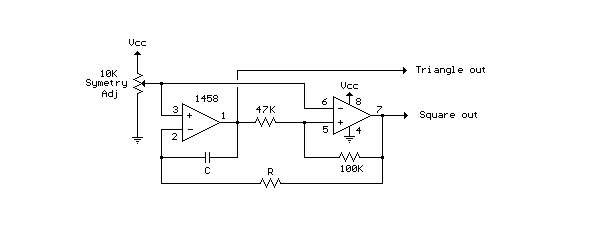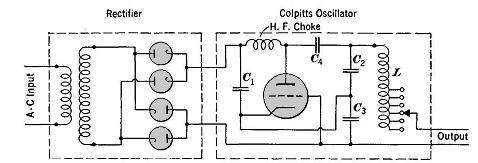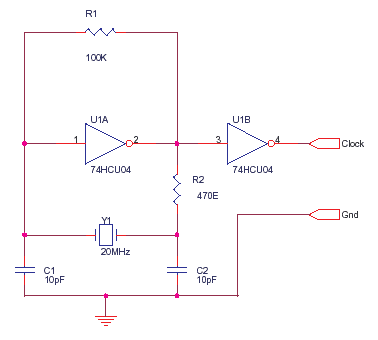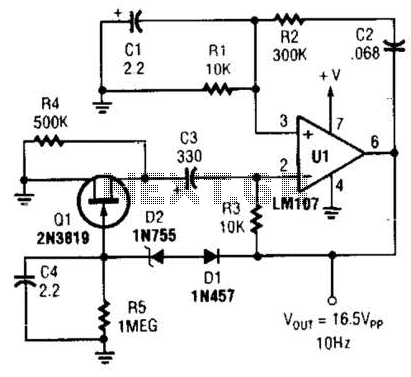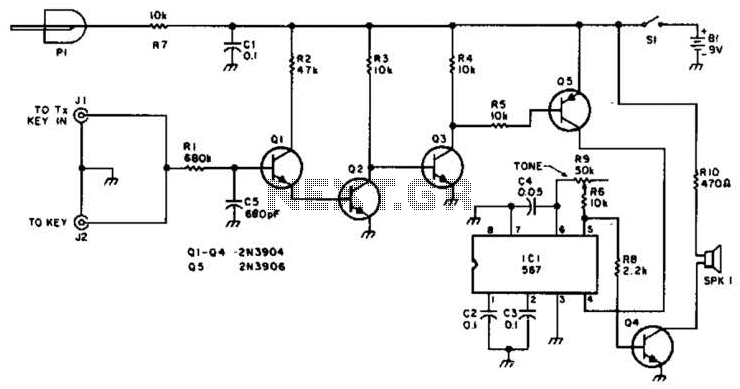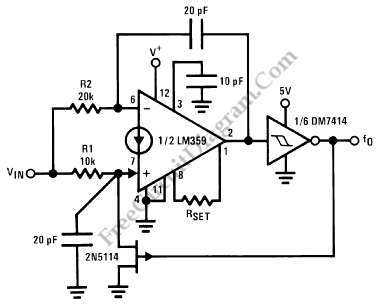
Yelp oscillator
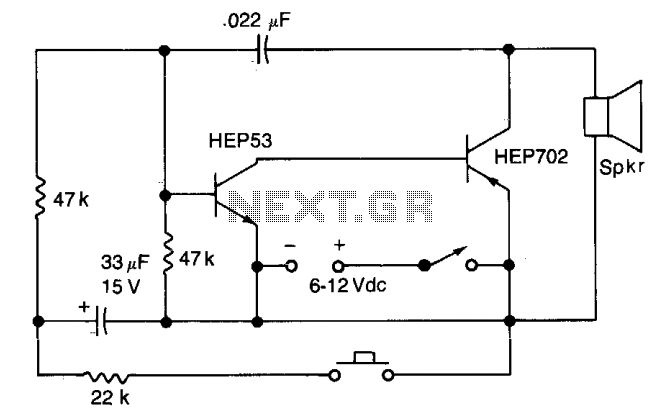
Closing the pushbutton switch initiates the siren, which then increases to a higher frequency. Releasing the switch causes the tone to decrease until switch S2 is closed again. The quality of the tone can be modified by altering the 0.022 µF capacitor.
This circuit operates based on a pushbutton switch mechanism, which serves as the primary control for the siren's functionality. When the pushbutton switch is closed, it activates the siren circuit, causing the siren to produce a sound that rises in frequency. This frequency modulation is a key feature, allowing for a dynamic auditory signal that can be utilized in various applications such as alarms or alerts.
Upon releasing the pushbutton switch, the circuit enters a decay phase where the tone frequency gradually decreases. This fading effect can create a more natural sound transition, enhancing the auditory experience. The operation of the circuit is further influenced by switch S2, which, when closed, re-engages the higher frequency tone, allowing for continuous operation without the need to hold the pushbutton switch.
The tone quality, an essential aspect of the siren's performance, can be finely tuned through the adjustment of the 0.022 µF capacitor. This capacitor plays a crucial role in determining the frequency response of the circuit. By changing its value, the resonant frequency can be shifted, thereby altering the sound characteristics produced by the siren. This feature allows for customization of the audio output to meet specific requirements or preferences.
In summary, the described circuit provides a versatile and adjustable siren system, with controls that facilitate both the initiation of sound and the modulation of its frequency and quality. The integration of pushbutton and toggle switches, along with the variable capacitor, forms a user-friendly interface for effective sound management.Close the pushbutton switch and the circuit starts the siren up-shifting to a higher frequency. Release it and the tone slides down until S2 is closed again. Tone quality is adjusted by changing the 0.022 µf capacitor. 🔗 External reference
This circuit operates based on a pushbutton switch mechanism, which serves as the primary control for the siren's functionality. When the pushbutton switch is closed, it activates the siren circuit, causing the siren to produce a sound that rises in frequency. This frequency modulation is a key feature, allowing for a dynamic auditory signal that can be utilized in various applications such as alarms or alerts.
Upon releasing the pushbutton switch, the circuit enters a decay phase where the tone frequency gradually decreases. This fading effect can create a more natural sound transition, enhancing the auditory experience. The operation of the circuit is further influenced by switch S2, which, when closed, re-engages the higher frequency tone, allowing for continuous operation without the need to hold the pushbutton switch.
The tone quality, an essential aspect of the siren's performance, can be finely tuned through the adjustment of the 0.022 µF capacitor. This capacitor plays a crucial role in determining the frequency response of the circuit. By changing its value, the resonant frequency can be shifted, thereby altering the sound characteristics produced by the siren. This feature allows for customization of the audio output to meet specific requirements or preferences.
In summary, the described circuit provides a versatile and adjustable siren system, with controls that facilitate both the initiation of sound and the modulation of its frequency and quality. The integration of pushbutton and toggle switches, along with the variable capacitor, forms a user-friendly interface for effective sound management.Close the pushbutton switch and the circuit starts the siren up-shifting to a higher frequency. Release it and the tone slides down until S2 is closed again. Tone quality is adjusted by changing the 0.022 µf capacitor. 🔗 External reference
